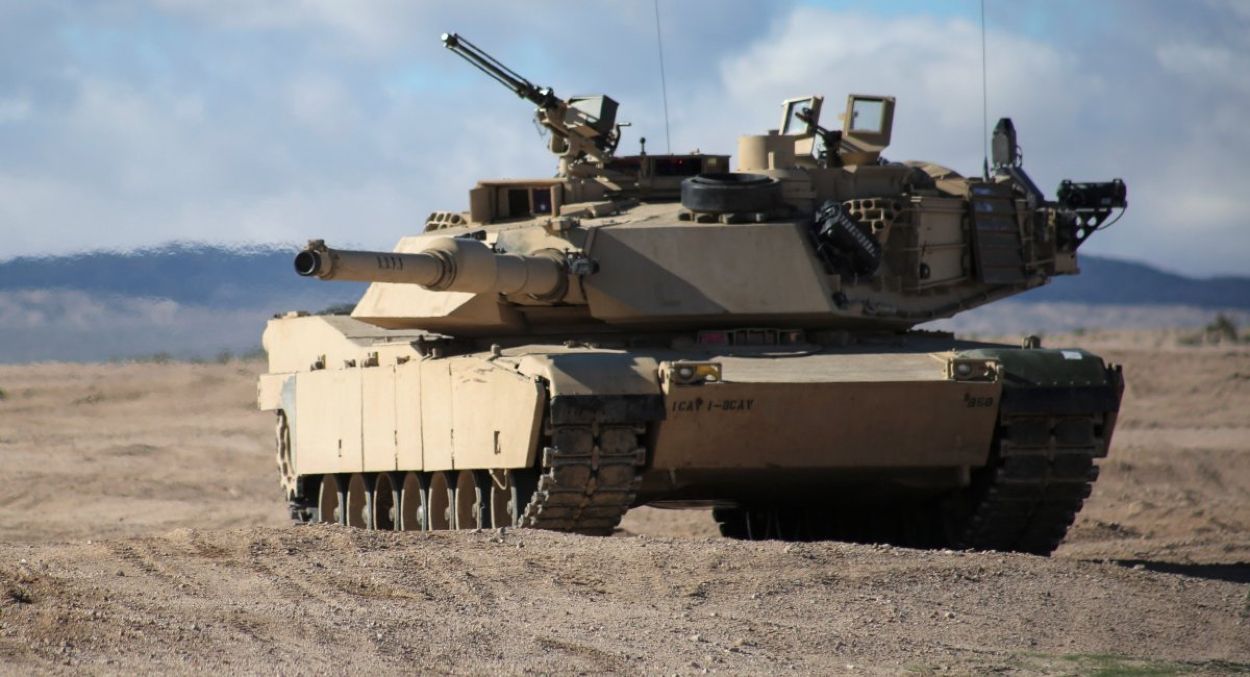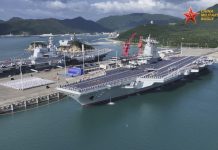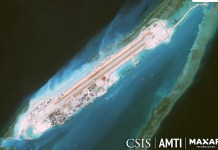The NATO allies could not convince the United States and Germany at the Ramstein Air Base in Germany last week to categorically say that they would send their respective Abrams and Leopard 2 tanks to Ukraine.
In A Tank-On-Tank Battle, Russian Main Battle Tank Under Cover Of Terminator BMPT ‘Terminates’ Ukrainian MBT
Was this reluctance on the part of Washington and Berlin because they were running out of enough weapons, including tanks, to send them to Ukraine?
The Newsweek magazine has quoted US Navy Secretary Carlos Del Toro warning that the US may find it “challenging” to continue to arm itself and supply weapons to Ukraine if weapon production doesn’t increase.
European Union foreign policy chief Josep Borrell has also expressed fears that “the military stocks of most [EU] member states has been, I wouldn’t say, exhausted, but depleted in a high proportion, because we have been providing a lot of capacity to the Ukrainians.”
William Reno, Professor and Chair of the Political Science department at Northwestern University, told Newsweek that “Weapon Supplies” were finite, even if there were increased production. After all, weapons transfer impact providers’ military preparedness, he argued, detailing how a US military division may pass weapons on to another department for training and how that unit’s “command asks whether those transfers impair their capacity to perform.”
Besides, military analysts invariably agree that Western nations usually produce arms at much smaller volumes during peacetime, with governments opting to slow down expensive manufacturing and only produce weapons as needed.
“Some of the weapons that are running low are no longer being produced, and highly skilled labor and experience are required for their production — things that have been in short supply across the US manufacturing sector for years,” according to a CNBC report.

So much so that not long ago, NATO Secretary-General Jens Stoltenberg held a special meeting of the alliance’s arms directors to discuss ways to refill member nations’ weapons stockpiles.
“We are now working with industry to increase production of weapons and ammunition,” Stoltenberg had told The New York Times, adding that countries needed to encourage arms makers to expand their capacity longer term by putting in more weapons orders.
Why Is US Not Sending Abrams Tanks To Ukraine?
However, all this does not mean that the Western nations, particularly the United States, are not competent enough to produce arms if they so desire.
In fact, unlike Russia, which has a limited number of arms manufacturers making their weapons, the US military relies on thousands of private companies, both big and small, to replace its stocks. In addition, the US has partners like Israel and South Korea that could produce weapons if needed.
Therefore, if there is slowness on the part of the US for acceding to Ukraine’s request for getting Abrams (General Valery Zaluzhny of Ukraine has said that his forces need about 300 Western tanks to make a difference in battles for fiercely contested cities and towns in the eastern provinces before Russia deploys hundreds of thousands of newly conscripted soldiers in an anticipated spring offensive), the reason could be strategic.
The Biden Administration believes that American tanks would be seen as a sign of escalation by the United States — a risky step for a global superpower trying to avoid a broader conflict with Russia, another nuclear superpower.
But officially, US officials say that the US does supply quality weapons, including fighting vehicles such as Strykers and Bradleys — to Ukraine. And if the US is not supplying Abrams, such tanks are ill-suited to battle in eastern Ukraine. After all, supply lines for their specific fuel, frequent maintenance, spare parts, transport, and training could easily be cut off.
Germany’s Reluctance To Send Leopard 2 Tanks
What about Germany and its reluctance to send Leopard 2? The answer is also strategic. Germany has long refused to send its most potent weapons to countries in conflict, a byproduct of its legacy of starting World War II. And this is something most Germans continue to believe in if recent opinion polls are any indication.
German Chancellor Olaf Scholz has repeatedly said he would not “go in alone” when sending weapons into Ukraine. He has indicated that he would send Leopard 2 provided US President Joe Biden sends Abrams.
And he has declared that he wouldn’t be rushed into important security decisions by “excited comments, adding that a majority in Germany supports his government’s “calm, well-considered and careful” decision-making.
Of course, some NATO members argue, particularly the new members in Eastern Europe like Poland and Finland, that if Germany is not sending Leopard 2, it should allow them to do so from their stockpiles by issuing licenses to re-export them.

An estimated 2,000 German-made Leopard 2 tanks of various versions are used by at least 13 European and NATO militaries. These are Austria, Denmark, Finland, Germany, Greece, Hungary, Norway, Poland, Portugal, Spain, Sweden, Switzerland, and Turkey. The Leopard 2 tank, first introduced in 1979, has been upgraded in several rounds.
The argument here is that the more some of these countries donate tanks, the easier it will be to share the burden of giving them to Ukraine. The same applies to stored reserve vehicles, where only a few are in operable condition, with the rest needing restoration. The more countries share this effort, the more they can achieve with low numbers per country, and the cheaper it will be to refurbish phased-out vehicles.
However, no European nation has reportedly formally asked Berlin to permit their Leopard tanks to be sent to Ukraine; one only hears the individual opinions of experts and officials. The nearest that any country has come in this regard happens to be Poland, whose Prime Minister Mateusz Morawiecki has said that Warsaw would consider giving its tanks even without Berlin’s permission.
“Consent is of secondary importance here. We will either obtain it quickly, or we will do the right thing ourselves,” Morawiecki has said. But, the catch-word here is “consider.”
Capability To Manufacture Weapons A Hindrance?
Viewed thus, it is political will rather than means or capacity to produce weapons or tanks that can be supplied to Europe by the NATO allies that is the real issue. Steven Myers, a former member of the US State Department Advisory Committee on International Economic policy and the National Security Membership Committee, argues that the US and Western allies could eventually hit their issues with weapon production.
“Is the West going to run out of weapons? Yes and no,” Myers says.
He says, “The US can’t keep sending weapons—for example, artillery shells—without replenishing its stockpile. The Pentagon has been asking its contractors to ramp up production. But contractors, being sensible, are more than a little reluctant to do so without guarantees by the Pentagon for covering the capital expenses required for increasing production rate.”
After all, businessmen are businessmen, whether in the military or civilian sector. They want to get the best returns if the situation is conducive. And since Russia’s full-scale invasion in February 2022, contracts have been rolled out thick and fast to speed up weapons production and fill supply gaps.
Some companies like Lockheed Martin, Raytheon, Boeing, and Northrop Grumman are reaping the rewards by producing some of the most in-demand and expensive weapons sent to Ukraine. So much so that the war has sent their stocks surging, with the share price of Northrop Grumman increasing 40 percent by the end of 2022, while Lockheed Martin’s was up by 37 percent.
In other words, companies can constantly replenish arms provided the political leadership gives them the green signal. But that is not coming readily now that the Republicans control the House of Representatives.
After all, the new Speaker, Kevin McCarthy, has been on record to have said: “I think people are going to be sitting in a recession, and they’re not going to write a blank check to Ukraine. They just won’t do it.”
Besides, even President Biden will not aggravate the matter with Russians by sending Abrams to Ukraine, at least for now.
- Author and veteran journalist Prakash Nanda has been commenting on politics, foreign policy on strategic affairs for nearly three decades. A former National Fellow of the Indian Council for Historical Research and recipient of the Seoul Peace Prize Scholarship, he is also a Distinguished Fellow at the Institute of Peace and Conflict Studies.
- CONTACT: prakash.nanda (at) hotmail.com
- Follow EurAsian Times on Google News




